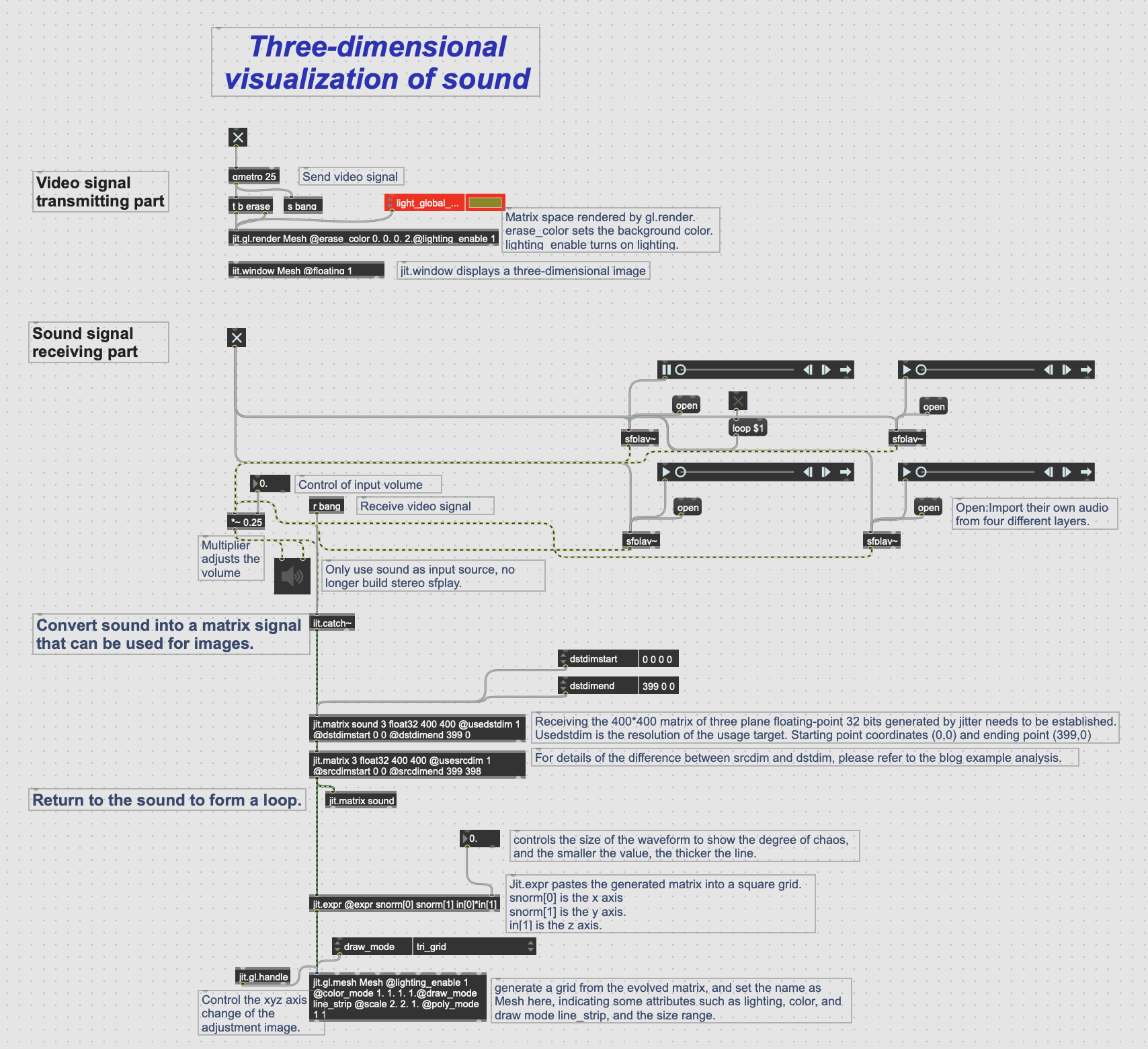Topic ideas and references
We are the presence group. At the beginning, our group thought a lot of topics, including emotional changes and psychological changes to express the existence and feelings of the spiritual level. At the same time, we also thought of natural themes such as seasonal changes and weather changes to express the existence and somatosensory feeling of the physical level. The spiritual level is more subjective.On the physical level, it is too vague.
Therefore, we want to combine these two feelings and have determined the final theme- Thalassophobia, which combines the natural ocean and the fear that is inspired by the sea.
I found some works by many interaction designers who work on emotions and natural environment as my visual reference.These works include the visual presentation of particles and lines, as well as the operation form of gesture interaction, which constitutes my initial idea of the final presentation of our project works.But I have to admit that my artistic ideas are limited by my technical abilities.
This video is about particle imaging of whales in digital media studio Bleeeeta:
The following pictures are The Folded Starry Sky interactive audio-visual performance created by interaction designer_ Ma ShiHua in China.
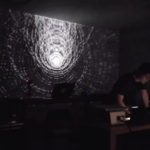
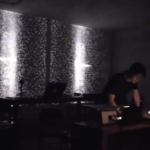
The following picture is Gesture interaction for order in chaotic words
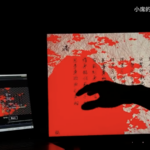
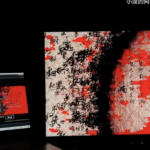
Project visual communication
Draw_mode
Our works contain four different levels of emotions:
- To hear the sound of sea monsters approaching
- The sense of chaotic and confusion caused by fear of the ocean
- The third is the fear of escaping into the unknown after chaos
- The peace and calm left to people’s imagination.
Line particles can express our fear of the ocean concisely, and I set up different pattern changes to reflect the expression of these four emotions.There are some draw modes in my patch. Here are some pictures and lines of different modes.
tri_grid(sea creature) & triangles_adjacency(chaotic)
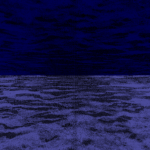
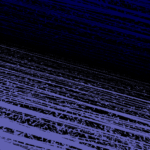
triangles_strip_adjacency(unknown wave) & line_strip(calm peaceful)
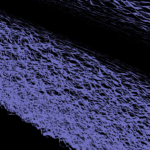
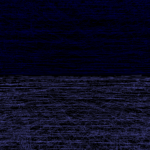
Interactive method
Considering that we need to do gesture interaction, my visual effect part gives some variable parameters to the sensor as artificially controllable parameters.
These videos are the visual effects produced by direct regulation on my patch.
You can see in the video that I adjusted the draw_mode to change the patterns and one of the Number Objects to control the scaling strength of the lines.As shown in the figures:
Regulating line density:

Make the names of different modes in draw mode into remote controllers.
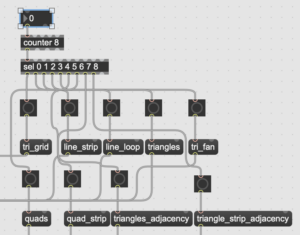
What I neglected is that it is sensitive to directly control the pattern change in patch, and even the line change is more diverse.In live performance, the pattern change is very rigid and does not give the audience a visual impact, which may be related to the sensitivity of the sensor. It seems that the signal transmitted to max by people through the sensor as a medium is gradually decreasing.
This is a video material recorded on the spot:
Improvement suggestions
During the live demonstration of the project, I communicated with some teachers, and they gave me some valuable suggestions on visual performance.
“The pattern transformation of the video is very abstract, but it can also be a little more narrative. For example, the pattern that increases the intention of falling quickly indicates that the player falls into the ocean and highlights the fear.”
I understand why the teacher made such a suggestion. At least compared with the visual effects of these visual concepts I made in the early stage, the visual effects of live performances did not meet my inner expectations.
